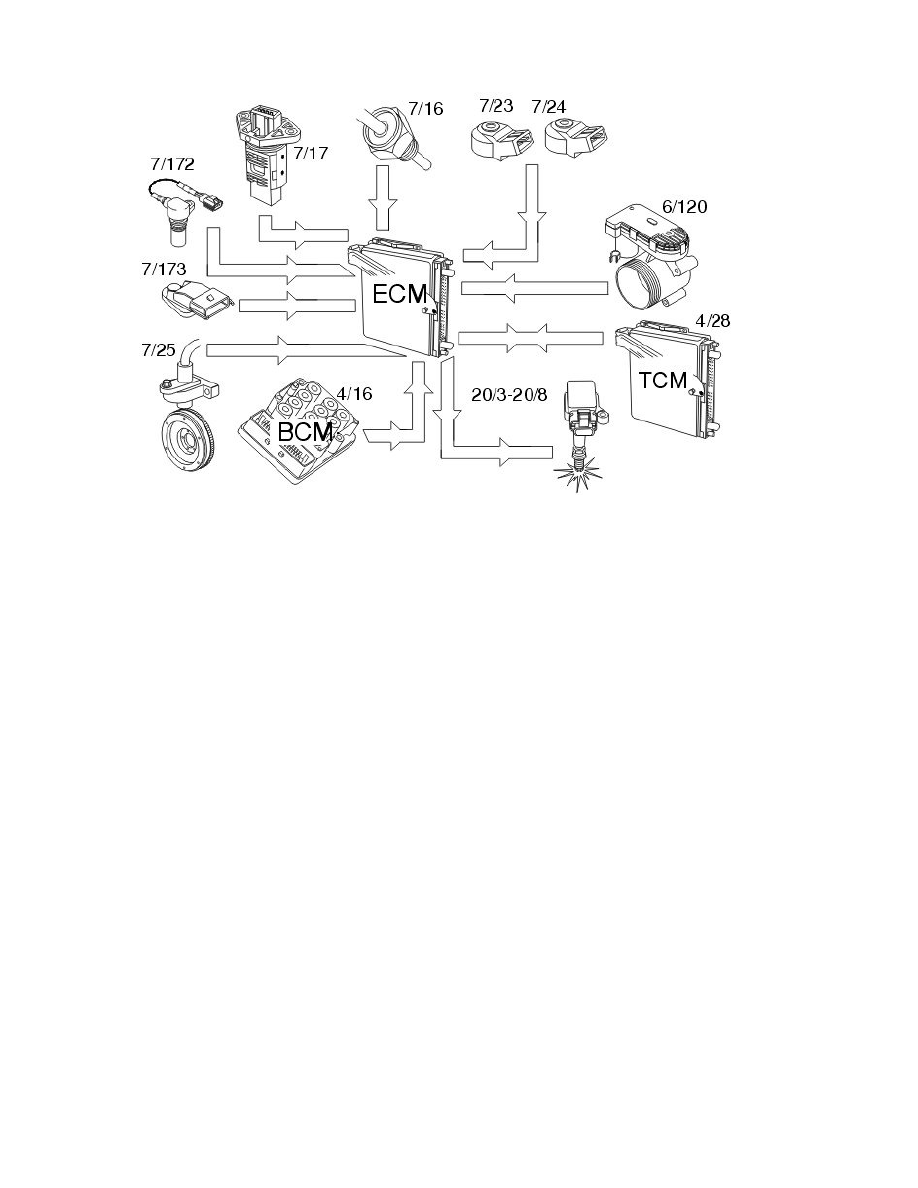XC90 2.5T AWD L5-2.5L Turbo VIN 59 B5254T2 (2003)

Ignition control
The following components are used for ignition control:
-
engine speed (RPM) sensor (7/25)
-
camshaft position (CMP) sensor (7/172-7/173)
-
mass air flow (MAF) sensor (7/17)
-
engine coolant temperature (ECT) sensor (7/16)
-
throttle position (TP) sensor on the electronic throttle unit (6/120)
-
knock sensor (KS) (7/23-7/24)
-
transmission control module (TCM) (4/28)
-
spark plugs with ignition coils (20/3-20/8)
-
brake control module (BCM) (4/16).
The engine control module (ECM) calculates the optimum ignition advance based on the software and information from the sensors. The engine control
module (ECM) cuts the current to the ignition coil mounted on the cylinder to be ignited and produces a spark.
During the starting phase the engine control module (ECM) produces a fixed ignition setting. When the engine starts and the car is driven the engine
control module (ECM) calculates the optimum ignition setting according to the engine speed (RPM), load, temperature etc.
The engine control module (ECM) analyses the signal from the knock sensors (KS) when the engine reaches operating temperature. If any of the
cylinders knock, the ignition is retarded for that specific cylinder until the knocking ceases.
The ignition then advanced to the normal position or until the knock recurs.
Before the transmission control module (TCM) changes gear, it sometimes transmits a torque limiting request to the engine control module (ECM). The
engine control module (ECM) then retards the ignition momentarily to reduce the torque, resulting in smoother gear changes and reducing the load on
the transmission. There are different ignition retardation levels depending on the signals from the transmission control module (TCM). The return signal
from the engine control module (ECM) to the transmission control module (TCM) confirms that the signal reached the engine control module (ECM).
The Brake Control Module (BCM) transmits information to the engine control module (ECM) about deviations in the drive line. The signal is used to
stop the diagnosis. For further information, also see Misfire diagnostics See: Powertrain Management/Computers and Control Systems/Description and
Operation/Misfire Diagnostics.
The engine misfires if the fuel does not ignite correctly. For further information, also see Misfire diagnostics See: Powertrain Management/Computers
and Control Systems/Description and Operation/Misfire Diagnostics.
Cruise control
